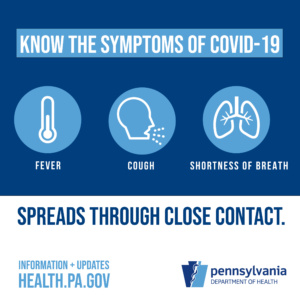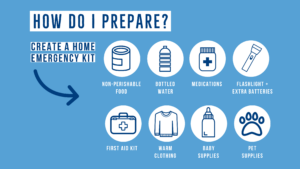As a parent, Kristen Purdue is concerned after learning of elevated lead levels in the drinking water in Rothsville supplied by the Warwick Township Municipal Authority, even though the levels met EPA standards.
On Thursday night, Purdue prioritized her concerns: “Health concerns are primary, long-term effects, and wanting it to get fixed,” she said. Lead levels in water are only required to be tested every three years in Warwick Township and Lititz Borough. The most recent tests were done in 2013, and levels are not due to be tested again until the summer of 2016.
LititzDailyNews.com reported on Monday that the last time lead levels were tested in 2013 and were again reported in the 2014 Annual Water Quality Report issued for Rothsville by the Warwick Township Municipal Authority, the results showed that at least ten percent of homes tested in Rothsville had 11 parts per billion of lead. For the first six months of 2015, Flint, Michigan officials reported the same percentage of homes at the same 90th percentile lead level as Rothsville, 11 parts per billion, all the while telling residents the water was safe.
Purdue lives with her husband, Chris, and their daughter in the 3-bedroom, 2-bath home on idyllic Picnic Woods Drive, across the street from Rothsville Park. Water in their community comes from a nearby well that serves over 700 connections.
Soon after the birth of her daughter in 2005, Kristen contacted Warwick Township offices to inquire about fluoride levels in the water. She was surprised by what a township employee told her.
“I asked her if it was okay to drink the water, and the woman told me, ‘Do not drink the water. I don’t drink the water,’” Kristen recalled. She was surprised by what she had just heard. “The worker told me that. ‘Don’t drink the water.’”
Purdue heeded the warning, and her family has used bottled water since, although she acknowledged that she used tap water for tea and for cooking pasta.
“I won’t be doing that any more,” she said. While the township has worked to improve water quality since 2005, the concern today, in the wake of a scandal over sampling issues and water sources in Flint, Michigan, is lead, and what the Rothsville test results show. On Tuesday, Warwick Township released a statement regarding water quality that says, in part, “the annual water quality reports indicate that WTMA is in compliance with, and meets, all federal and state drinking water requirements.”
Running throughout the charming home built in 1985 are copper pipes, according to owner Chris Purdue. The age of the home and the presence of copper pipes would likely place it into the “high risk” category for lead in drinking water. To township water officials tasked by the state and federal law to evaluate the presence of the toxic chemical known to cause neurological problems in children even years after exposure, it is what is known as a Tier 1 house.
“Lead and copper tap sampling sites are classified as Tier 1, Tier 2, or Tier 3. Tier 1 sites are the highest priority sample sites,” reads Pa. Code 109.1103(g)(2), part of the regulations that govern water suppliers who must collect samples on a set schedule and provide results to the state to insure they are keeping consumers safe.
The goal is to collect tap water samples from homes like the one owned by the Purdue family to get an idea of what the worst-case lead risk is to residents. But for some reason, a water sample from the Purdue home was never collected by Warwick Township for lead testing in 2013. Kristen and Chris don’t recall ever being asked for one.
Instead, Warwick Township Municipal Authorities collected samples from two of their neighbor’s homes across the street, but they were not Tier 1 residences. They weren’t even Tier 2 residences. The township classifies them as Tier 3 homes.
In fact, all 10 of the tap water samples submitted for lead level testing in 2013 by Warwick Township were from Tier 3 homes. But was that an appropriate selection of test sites?
“Sampling only Tier 3 sites is acceptable ONLY if there are NO Tier 1 or Tier 2 locations anywhere in the distribution system,” according to Neil Shader, assistant press secretary for the Pennsylvania Department of Environmental Protection.
Warwick Township Manager Dan Zimmerman, who is also the administrator for the Warwick Township Municipal Authority, described the WTMA’s site selection in an email to LititzDailyNews.com on Wednesday: “We select homes built before 1980. The reason for that sample group is the common practice of lead solder on copper piping.” In a follow-up email, Zimmerman was asked if all samples came from Tier 3 homes.
“Our sample base is all Tier 3,” wrote Zimmerman. “We do not have any Tier 1 or 2. Levels. We do not have any lead pipes or lead service lines.”
According to Shader, the law is clear on what the sampling priority is for townships like Warwick:
“The water supplier shall select all tier 1 sample site locations, if possible. A community water system with an insufficient number of tier 1 sampling sites shall complete its sampling pool with tier 2 sites. Tier 3 sites shall be used to complete the sampling pool if the number of tier 1 and tier 2 sites is insufficient. If the system has an insufficient number of tier 1, tier 2 and tier 3 sites, the water supplier shall sample from other representative sites throughout the distribution system in which the plumbing materials used at the site would be commonly found at other sites served by the system,” he wrote in an email to LititzDailyNews.com.
“First, our sampling protocol follows all required requirements from DEP,” wrote Zimmerman in an email to LititzDailyNews.com. The sampling base consists of 10 residential structures. All test results are sent back to the home owners who participated in the sample base. All samples follow and are in compliance with regulations.”
Yet on Picnic Woods Road sat a likely Tier 1 house, with untested water that flowed through copper pipes. Nearby are five more likely Tier 1 homes, which also went untested for lead in 2013. Across the street, however, the two Tier 3 homes that were tested by the township showed little lead.
Meanwhile, residents still have questions and expressed hopes that their water quality is adequate and accurately tested.
Over on Picnic Woods Circle, Dave Brinkman discussed water quality concerns as he fed dinner to his sons, ages 11 and 2 and awaited the arrival of his wife.
“We have a filter, so I hope that does something about it,” he said. “We only use drinking water out of the fridge.”
To receive free email notification of our next story about lead in Lititz water, email [email protected]













